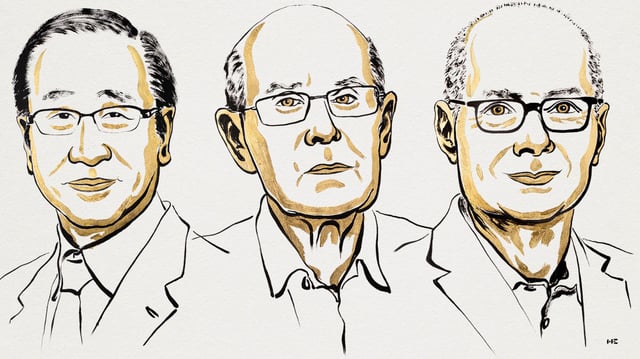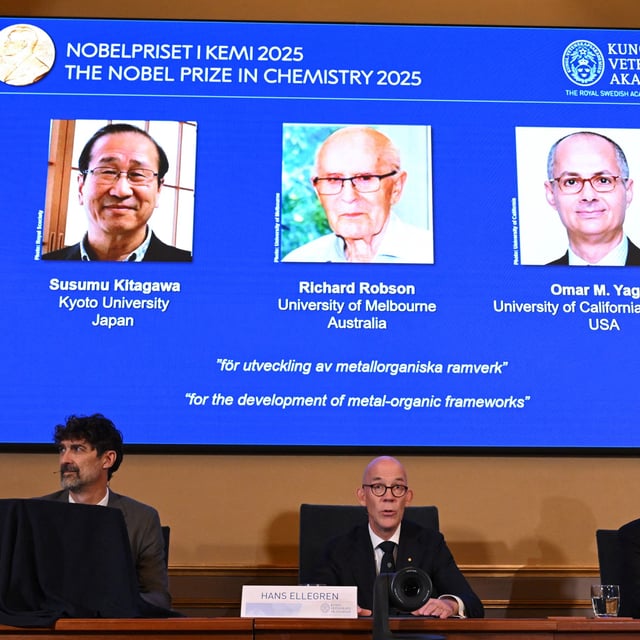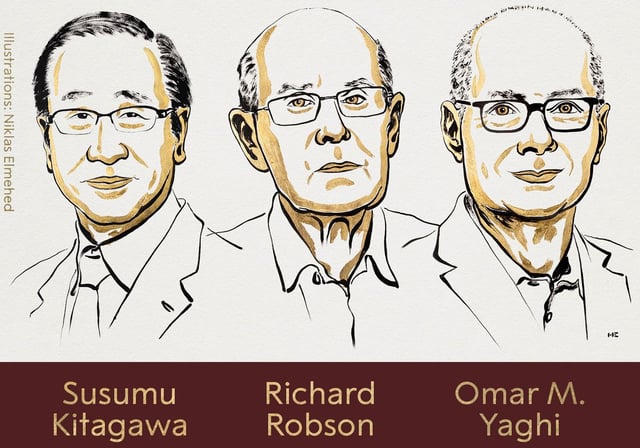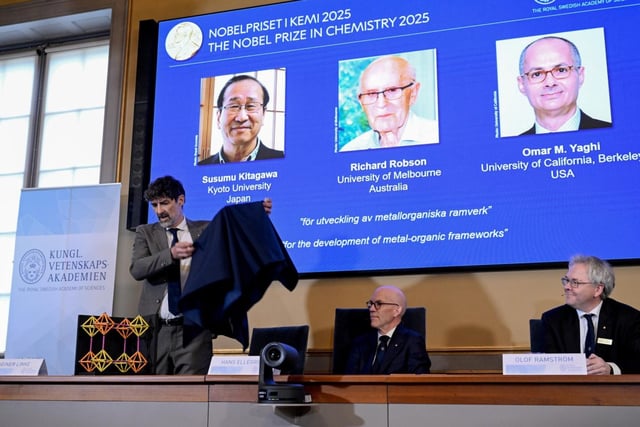Overview
- Announced in Stockholm, the trio will share 11 million Swedish kronor for their Chemistry prize.
- The Nobel Committee highlighted applications including harvesting water from arid air, capturing carbon dioxide, storing toxic gases, catalyzing reactions, and separating PFAS from water.
- Credit for the advance spans decades: Robson’s 1989 frameworks, Kitagawa’s early 1990s demonstrations of gas uptake and flexibility, and Yaghi’s highly stable, designable MOFs by the early 2000s.
- Researchers have synthesized tens of thousands of MOFs, with industry piloting uses from carbon capture at industrial sites to containment of toxic gases in semiconductor manufacturing.
- Affiliations include Kyoto University (Kitagawa), University of Melbourne (Robson) and UC Berkeley (Yaghi), and the committee likened MOFs to “rooms in a hotel” and Hermione’s handbag to convey their storage capacity.



